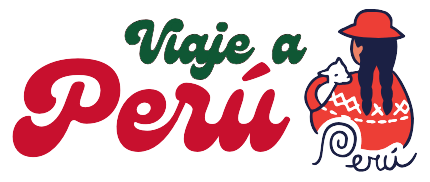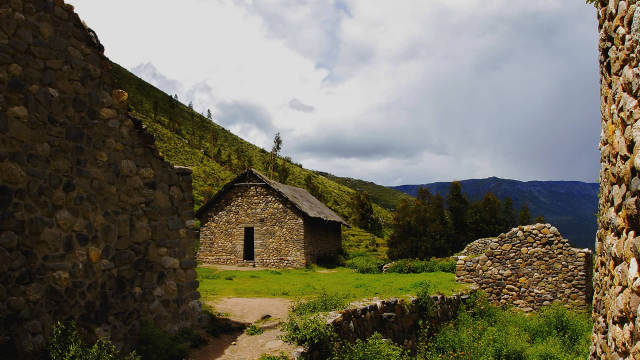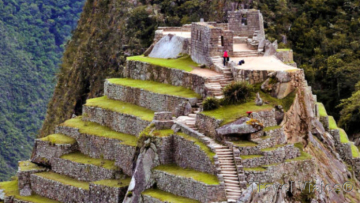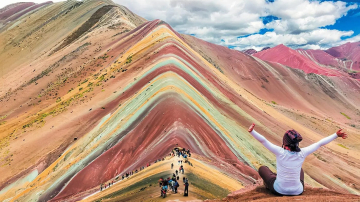1. Chinchero: The Village of Weavers
Located in the Sacred Valley of the Incas , Chinchero is known as “the town of rainbows.” This town not only dazzles with its panoramic views of the Andes, but also with its textile heritage. Chinchero communities have preserved traditional weaving techniques that date back to pre-Hispanic times. Visitors can participate in weaving workshops and see firsthand how wool is dyed with natural dyes and beautiful textiles are created.
On Sundays, the Chinchero market becomes a meeting point for locals and travelers , offering artisanal products, fresh vegetables and unique souvenirs. It is an opportunity to immerse yourself in everyday life and experience the hospitality of its people.
2. Pisac: Culture and Landscapes in Harmony
Pisac is another town in the Sacred Valley that enchants visitors with its impressive Incan ruins and vibrant artisan market. Every week, the Pisac market attracts travelers in search of high-quality jewelry, textiles, and pottery. Ancestral traditions and spiritual beliefs are deeply rooted in the community, and it is common to see ceremonies dedicated to Pachamama.
Pisac's proximity to the terraces and archaeological ruins offers the chance to combine culture with adventure . Exploring these remains gives you a glimpse of the sophistication of Incan engineering and an understanding of the spiritual significance of the region.
3. Ayacucho: Capital of Popular Art and Holy Week
Ayacucho is known for its historical and cultural wealth, as well as for being the birthplace of Peruvian crafts . The streets of this town are adorned with workshops where altarpieces, tapestries and ceramic figures are made that capture the essence of Andean life. The dedication of its artisans has made Ayacucho a benchmark for popular art in Latin America.
Holy Week in Ayacucho is one of the most famous celebrations in Peru , attracting thousands of visitors with its processions and festivities that combine Catholic tradition and local elements. During these days, the city is filled with music, dance and colorful parades that transform the experience into an unforgettable event.
4. Tarma: The Pearl of the Andes
Tarma , known as “The Pearl of the Andes” , is an ideal destination for those seeking natural beauty and living traditions. This charming town in the Junín region is famous for its flowers, which are used to decorate the town on special dates , especially during Holy Week. The flower carpets that cover its streets are a spectacle of colors and aromas.
Tarma also offers hikes to archaeological sites and landscapes such as the Ahuashiyacu waterfalls , which allow visitors to connect with nature while learning about the stories and legends of the region.
5. Lamas: Amazonian Tradition and Lush Landscapes
Located in the San Martín region , Lamas is known as the “City of Three Floors” and stands out for its Amazonian and Andean heritage. This town is home to the native Quechua-Lamista community , which preserves its customs, dances and language. Visiting Lamas is an opportunity to witness cultural performances and visit the Lamas Castle , a curious construction that mixes local and European influences.
The panoramic views from Lamas offer a contrast between the jungle and the mountains , and the peaceful atmosphere is ideal for those seeking a different and enriching experience.
6. Puno: The Charm of Lake Titicaca
Puno , on the shores of Lake Titicaca , is a destination full of mysticism and history. The floating islands of the Uros , built with totora , are one of the most fascinating attractions , where visitors can learn about the way of life of this ancestral community. The hospitality of the Uros and their stories about the creation of the lake and their gods make the visit an unforgettable experience.
Every year, Puno celebrates the Festival of the Virgin of Candelaria , which combines music, dance and traditional clothing in a cultural expression that has been recognized by UNESCO as Intangible Cultural Heritage of Humanity.
Peru's towns are more than just tourist destinations ; they are gateways to a world of traditions, art and human warmth. From the terraces of Chinchero to the totora islands in Puno , each town offers a unique experience that invites you to discover the diversity and richness of Peruvian culture. Exploring these places is a way to connect with Peru's living history and take home unforgettable memories that speak of its roots and its people.
We invite you to learn more about Peru here: Blogs from Peru.




